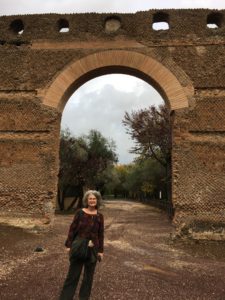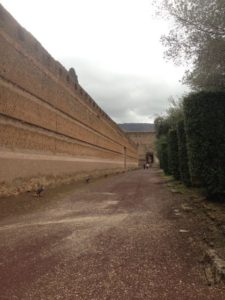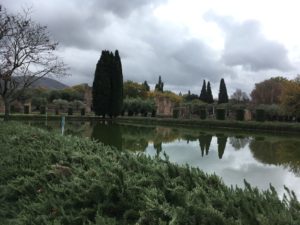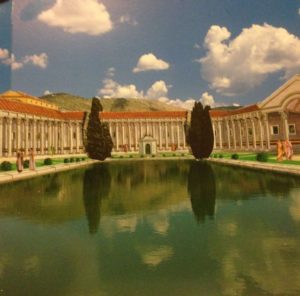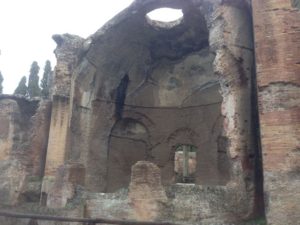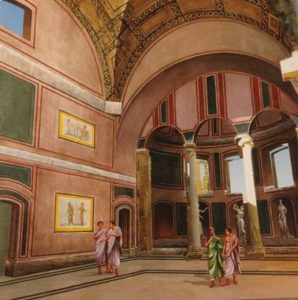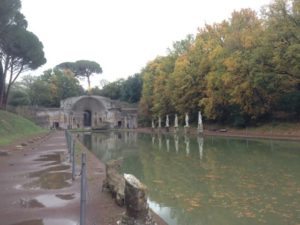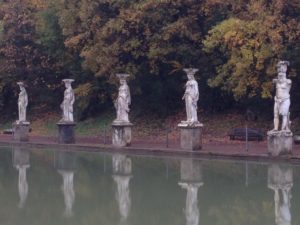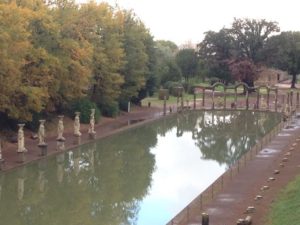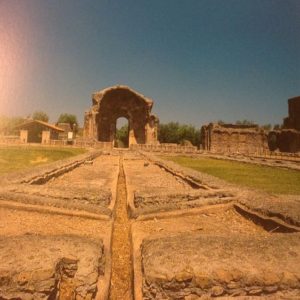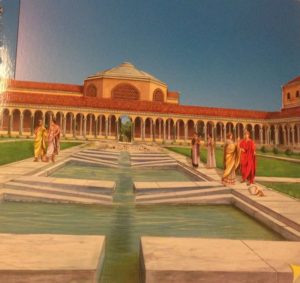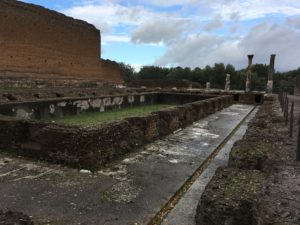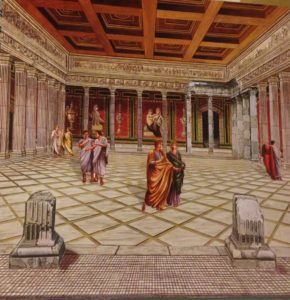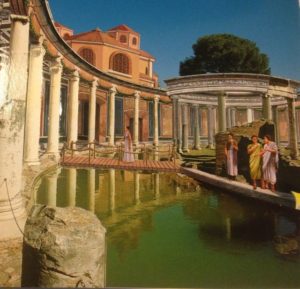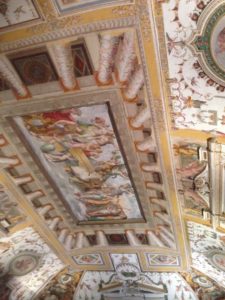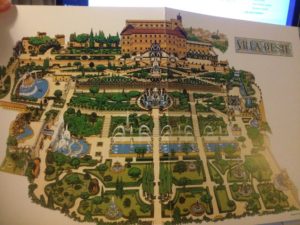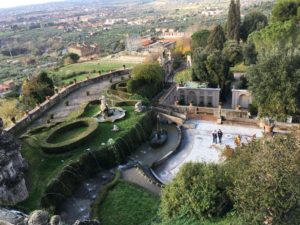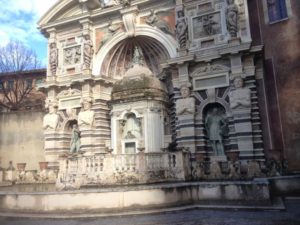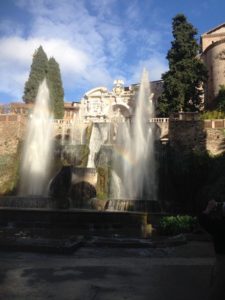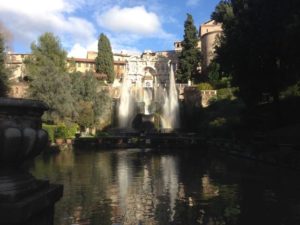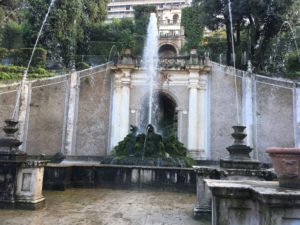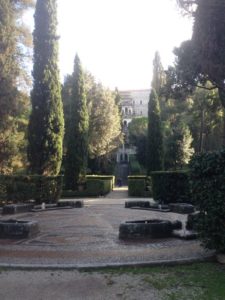We headed out this morning for Hadrian’s Villa and Villa D’Este in Tivoli. We took the metro nearest our hotel, Castro Pretoria to Ponte Mammolo (direction Rebbibia). At Ponte Mammolo, the Cotrel bus stop is just outside the station, but you need to go downstairs to buy bus tickets. Outside, we found a marquis that said Tivoli and when I asked, I was told it would take us to Villa Adriana (Hadrian’s Villa). It did but dropped us 1200 meters from the villa, quite a walk. There is a bus that drops you right outside the villa but we didn’t find it. It took us two hours to get to Villa Adriana from our hotel.
Hadrian’s Villa was immense, covering 300 hectares. Only one fifth of the original buildings are visible today.
Rome was at the height of its power under Hadrian, who was the second Spanish born Roman Emperor (after Trajan). He had a special passion for architecture. He rebuilt London in 122 AD (after the fire) and he built Hadrian’s Wall to protect against invasion from the north. Hadrian’s Villa was built between 118 and 134 AD.
When the villa was abandoned after the 3rd century AD, the statues, columns, and decorations were looted to be used in other villas (and even taken to Constantinople, the new capital of the eastern empire, by Constantine.
The entrance to the villa is through a high brick wall around the Poecile, a rectangular lake surrounded by covered porticoes. One hundred rooms (thought to be slaves quarters) occupied the structure that supported the Poecile.
The great Baths had floors of black and white geometric mosaics.
The Canopus is a rectangular pool, again surrounded by a covered walkway. Four caryatids (copied from the Acropolis in Athens) and statues of Mars, Mercury, and Venus look out over the pool.
The Imperial Palace had three sections, each with a covered walkway supported by columns. The portico of the Piazza D’oro was supported by sixty columns of alternating granite and marble.
The Fish Pond might have been used to entertain visitors by allowing them to catch fish.
The Room with Doric Pilasters may have been used as a tribunal.
The Maritime Theater is a circular structure with forty Ionic columns surrounding a moat with a tiny island in the middle. Because no records remain, no one knows exactly what its purpose was.
We caught the bus to Villa D’Este by the ticket office (you can buy your bus ticket at the same place you buy the ticket for the villa). It’s about a 15 minute ride to Tivoli where the bus drops you in the town center, a five minute walk to the villa (well sign-posted). There is also a tourist info kiosk right where bus drops you off.
Villa d’Este
Villa d’Este was originally a Benedictine monastery but was rebuilt by Cardinal Ipolito d’Este, son of Lucretia Borgia. At the age of ten he was named Archbishop of Milan and later became the Governor of Tivoli. He commissioned the gardens and fountains for which the villa is known. It was eventually owned by the Hapsburgs and became the property of Italy after the end of WWI.
The many rooms of the palace are filled with frescoes.
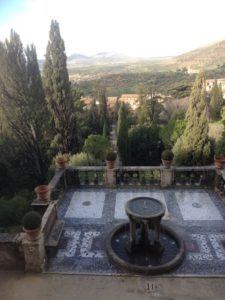 but the gardens and fountains are the main attraction.
but the gardens and fountains are the main attraction.
The Rometta is directly to the left as you enter. The central statue is of victorious Roma, with the she wolf nursing Romulus and Remus just beneath it.
The walkway of the Hundred Fountains is one of the most remarkable sights I’ve seen, with three tiers of fountains beside a mosaic walkway that leads from one side of the garden to the other and connecting the Roma fountain to the Fountain of Ovato on the far side.
The Fountain of the Organ was once connected to a water driven mechanism that imitated the sounds of an organ.
The Fountain of Neptune is below the Fountain of the Organ
The Fish Ponds, three large pools, cross the center of the garden.
The Fountain of Dragons is below the palace. The walls surrounding it are richly decorated with mosaics.
We caught the bus back to Ponte Mammolo on the same side of the street as the villa, past the public fountains. The bus was full of high school kids and took an hour an a half to get back to Ponte Mammolo.





